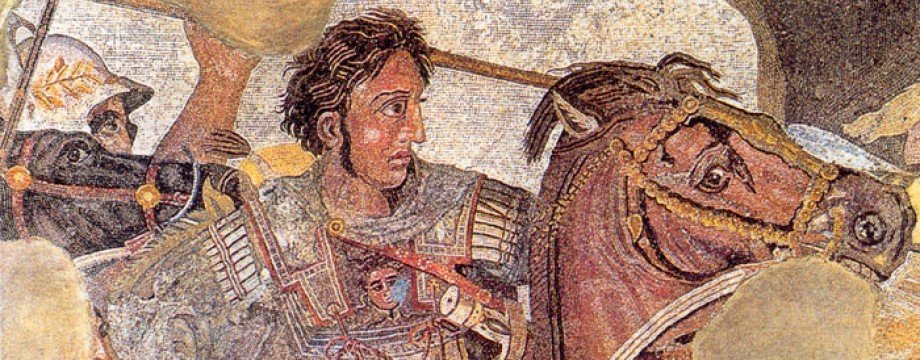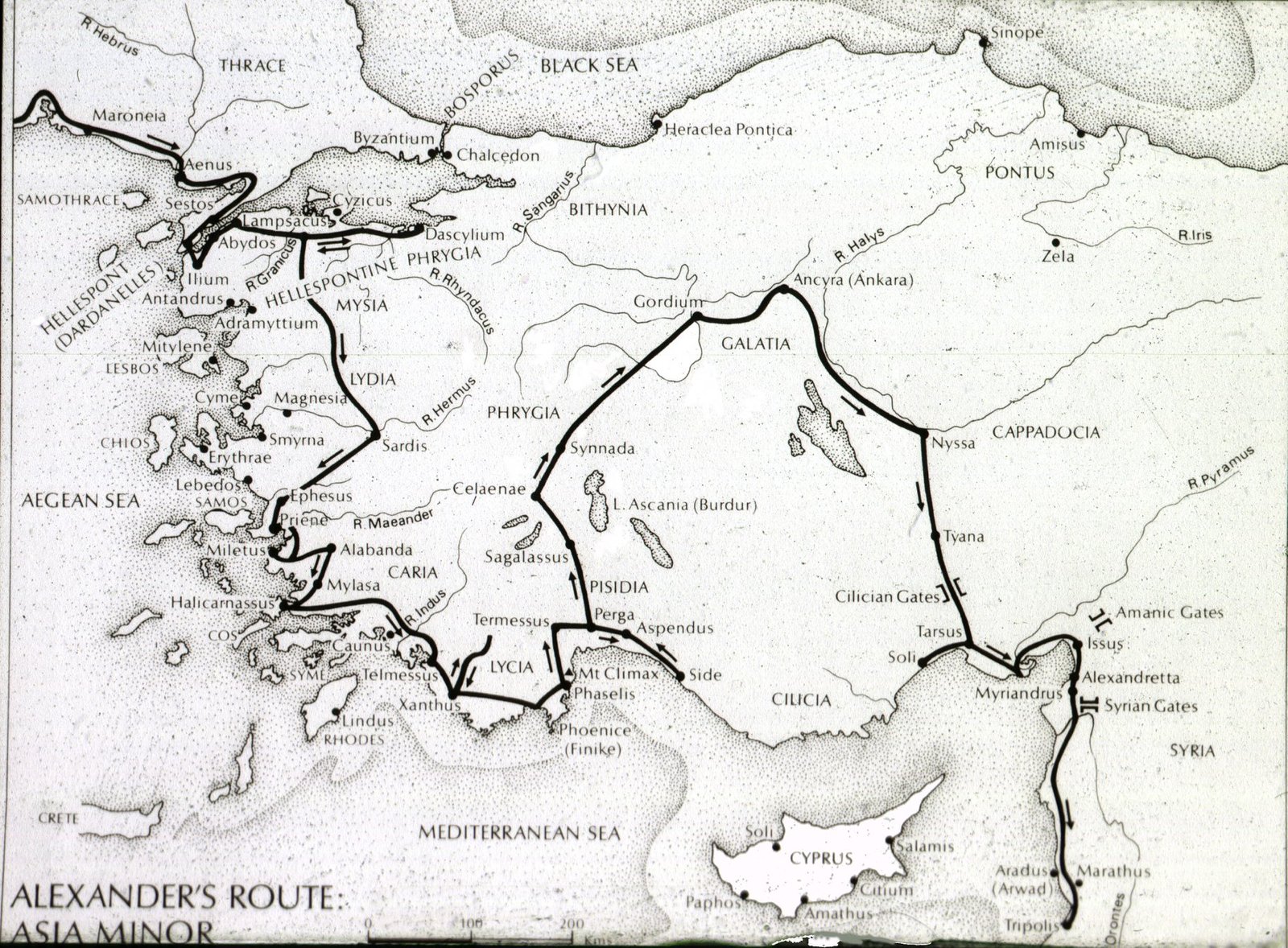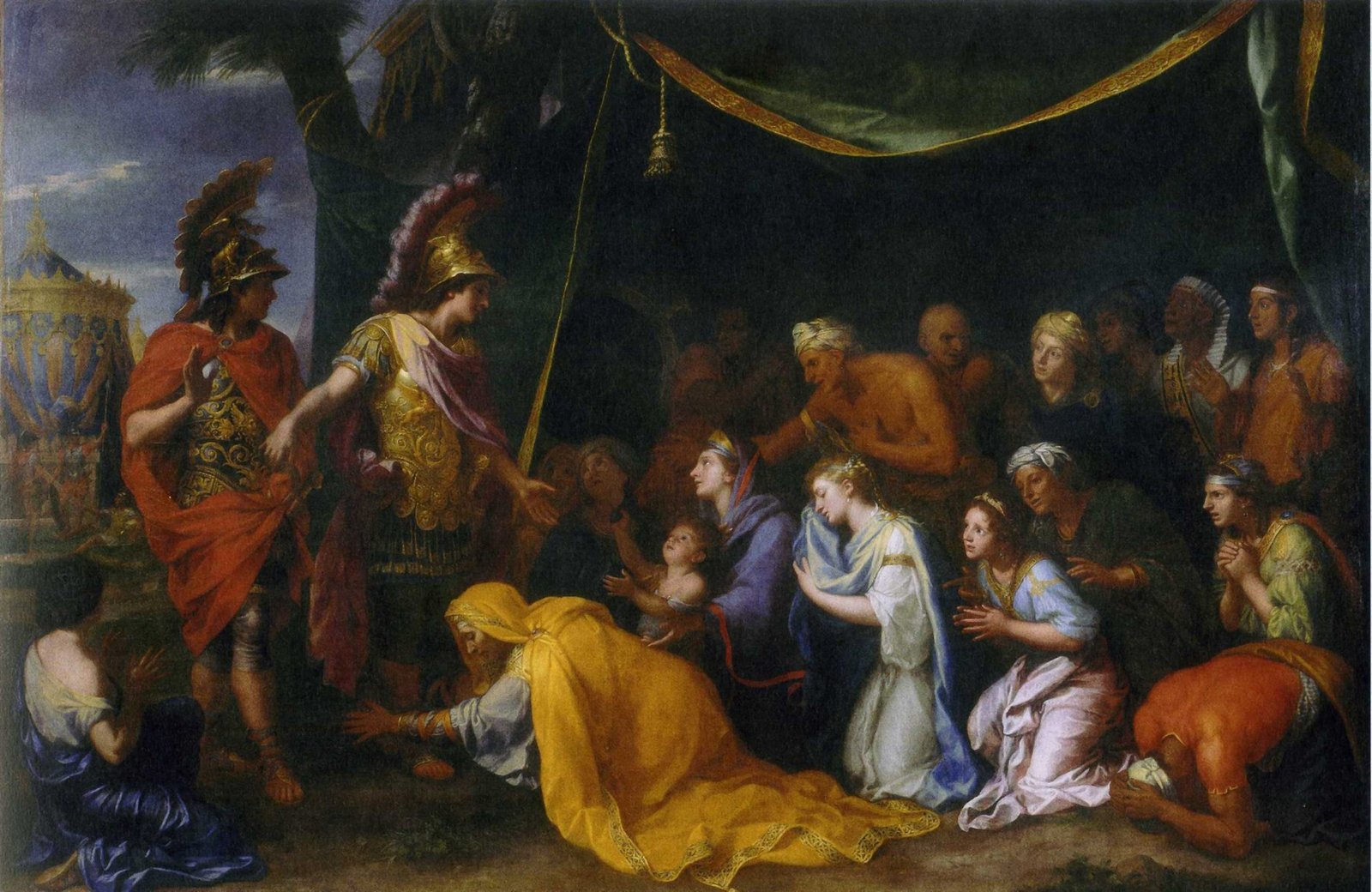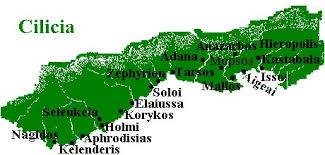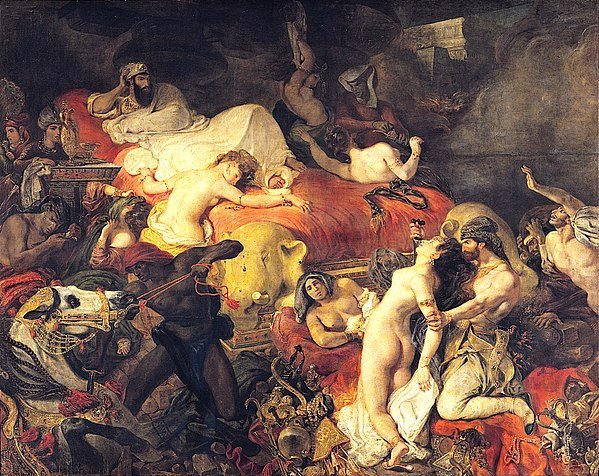In This Chapter
Return to Macedon and Departure for Asia Minor
Alexander conquered Thebes in the autumn of 335 BC. After settling matters with Athens, he returned to Macedon where he made sacrifice to Olympian Zeus in a ceremony (?) first established by his predecessor, Archelaus (who reigned from c.413-399). Later, he celebrated Olympic Games - not the famous one - at Dion (Arrian incorrectly says it was held at Aegae). Arrian notes that according to some sources, Alexander also celebrated ‘games in honour of the Muses’.
Around the time that Alexander was holding these celebrations, he received word that a statue of Orpheus in Pieria had started to sweat continuously. A number of seers made prophecies based on this occurrence but Arrian records only one. According to a seer named Aristander, who had served under Philip and would do so under Alexander to at least Bactria-Sogdia, the sweating meant that ‘all the composers of epic and lyric and choral odes’ would have much work to do in ‘celebrating Alexander and his achievements’.
***
Arrian now fast forwards to Spring 334 BC.
In late April or early May, Alexander lead his army to the Hellespont. Twenty days after leaving home, he arrived at Elaeus on the south-eastern tip of Thrace.

As you can see from the map, he chose the shortest sea crossing possible to Asia Minor Alexander never shied away from danger and indeed could sometimes be reckless in the face of it but he clearly knew there was a time and a place for everything. And the crossing to Asia Minor was not it.
At Elaeus, Alexander sacrificed to Protesilaus who was shot dead straight after setting foot on Asian soil following the crossing from Greece at the start of the Trojan war. Alexander wanted his expedition to go better.
Not all of the army went to Elaeus with him. Most of it had stayed with Parmenion a few miles up the road at Sestos. Alexander’s most senior general now oversaw its passage in one hundred and sixty triremes and an unspecified number of freighters to Abydos.
Alexander, meanwhile, sailed for Troy. While at sea - halfway between Thrace and Asia Minor - he sacrificed a bull and poured a libation into the sea. Once he reached Asia Minor, Alexander leapt off his ship - in full armour, no less.
Having already erected an altar at Elaeus, Alexander now had another built at his ships’ landing site. It was dedicated to Zeus ‘the protector of Landings’, Athena and Herakles. Leaving the shore, he marched to Troy, or the run down tourist trap that now claimed to be the same, where he sacrificed to ‘Trojan Athena’. He left his panoply there and took in its place weaponry that dated back to the Trojan War. At the end of his visit, he also sacrificed to Priam so as to ‘avert his anger at the race of Neoptolemus’ from which Alexander was descended (on his mother’s side).
Thoughts
This chapter forms a bridge between the Greek Campaigns and Campaign in Asia Minor. It is dominated by religion. Alexander changed as a person during the thirteen years of his kingship but some things remained constant - his belief in and loyalty to the Olympian gods. The various sacrifices that we see being carried out here are mirrored by those that he conducted during his last illness in June 323 BC.
On a few occasions in this chapter, Arrian distances himself a little from his sources: ‘The prevailing consensus is…’, ‘They also say…’, ‘The prevalent account…’. I take this wording to mean that the relevant information does not come from Ptolemy or Aristobulos?
The above three quotations all relate to Alexander’s crossing of the Hellespont and visit to Troy. Why might Ptolemy and Aristobulos not been interested in recording it (and Arrian vice versa)? We don’t know. Perhaps it never happened - the whole Alexander-Achilles thing is a later invention. Perhaps it did happen but still not with the significance that was later attached to it so Ptolemy and Aristobulos only mentioned it in passing. As for Arrian, perhaps he knew his readers would like the story.
